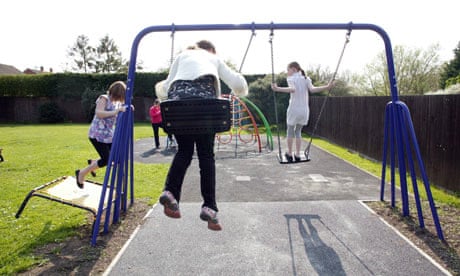More than 1,000 children are trapped in England's care system because local authorities wrongly believe that seeking the help of the voluntary sector to recruit adoptive parents is more expensive than trying to place children themselves, according to a report published tomorrow.
Local authorities are also deliberately delaying looking for permanent homes for children because paying for a year of fostering is cheaper than funding a permanent adoption, says centre-right thinktank the Policy Exchange.
"Despite the number of children being found adoptive parents having fallen in recent years, local authorities have turned away from using voluntary adoption agencies [VAAs]," said James Groves, author of the report, No Place Like Home: Improving Adoption Services in England.
The government's policy guidance encourages local authorities to work with the voluntary sector to place children. But tomorrow's report found that two thirds of VAAs have experienced a significant decrease in services purchased by local authorities in recent years. More than 40% said the falloff in business has put their future in jeopardy.
Following significant investment by the government, the number of adoptions rose from 3,100 in 2001 to 3,800 in 2005. The improvement, however, was not sustained: there were 3,200 in 2008 and early projections for 2009-2010 suggest a further decrease of 13%.
Only local authorities have the legal authority to place a child for adoption. But VAAs, which are independently run and have charitable status, specialise in finding adoptive parents for children whom local authorities have historically had difficulty placing, namely, those over four years old, from ethnic minorities or from a group of siblings. They also have a proven track record in making successful matches: only 6% of the placements made by the independent sector in 2008 broke down, compared to the 20% reported by local authorities.
"The main reason for the decline in use of VAAs is a misconception over their cost," said Groves. "But the failure of the public sector to factor in their own fixed overheads is leading to additional confusion about comparative costs."
There is a one-off cost of £36,905 to fund a successful placement through a VAA. "But if a local authority procures those same services from another local authority, the fee is only £12,600," said Groves. "Should they place the child themselves, the cost is perceived to be negligible."
Recent research commissioned by the Department for Children, Schools and Families (DCSF), however, revealed that the actual cost to a local authority of placing a child itself is £35,340.
Local authorities are also choosing foster care over adoption because, the report found, the annual £25,000 foster care cost is cheaper than the lump sum needed to pay for a permanent adoption. "As budgets tend to be run on an annual basis, the up-front cost of using a VAA is deemed prohibitive," said Groves. "But the truth is that successful adoptions pay for themselves in 18 months."
Based on statistics from the Hadley Centre for Adoption and Foster Care Studies at the University of Bristol, and the Centre for Child and Family Research at Loughborough University, up to 25% – or just over 1,000 – of those children with adoption recommendations at any one time are never found an adoptive family. The figure has been accepted by the DCSF.
Anecdotal evidence in the report suggests that some local authorities have even left a child "looked after" until the beginning of the next financial year rather than use a VAA placement, due to the impact on their annual budget, added Groves.
John Simmons, of the British Association for Adoption and Fostering, welcomed the report. "It is an issue of great concern to us that VAAs are not being used because of misconceptions about their cost," he said. "VAAs lead the way in good practice. They are a valuable and vital resource and it's deeply worrying that, because of financial miscalculations by local authorities, their future is in danger."
Most families on the adoption register will only take on babies, so the longer a child remains in care, the less likelihood there is of it ever finding a permanent placement. But Norman Goodwin, chair of the Consortium of Voluntary Adoption Agencies, also pointed out that, because of the fall in demand from local authorities, prospective parents are having to wait longer to be matched with a child.
"Almost one in five of our approved adopters are waiting longer than 18 months before a local authority is placing a child with them," he said. "For those families who decide to withdraw from the entire process, the disappointment of not being able to secure a placement has been cited as the primary reason for their withdrawal, once again reducing the chances of successful adoptions going ahead."
Baroness Delyth Morgan, the undersecretary of state for children, young people and families, said the report reflects her own concerns. "This report comes some months after the department acted on similar research. Our study shows that the best-performing local authorities make more use of third-sector adoption agencies, which not only help find suitable places quicker but also help save money in the longer term," she said.

Comments (…)
Sign in or create your Guardian account to join the discussion